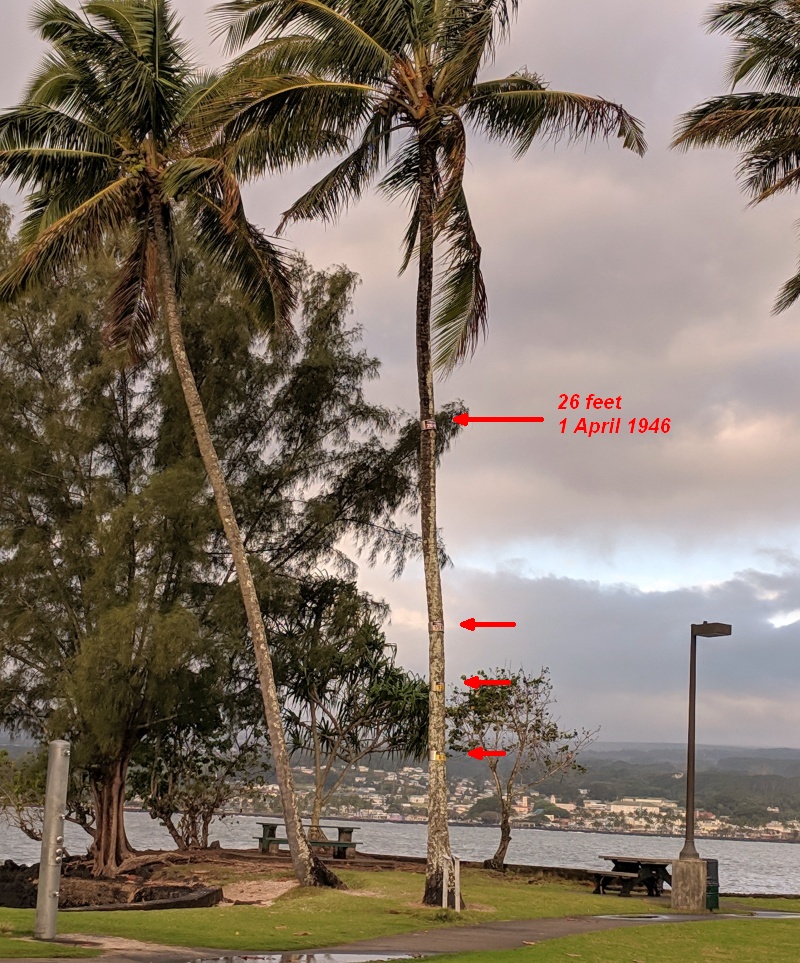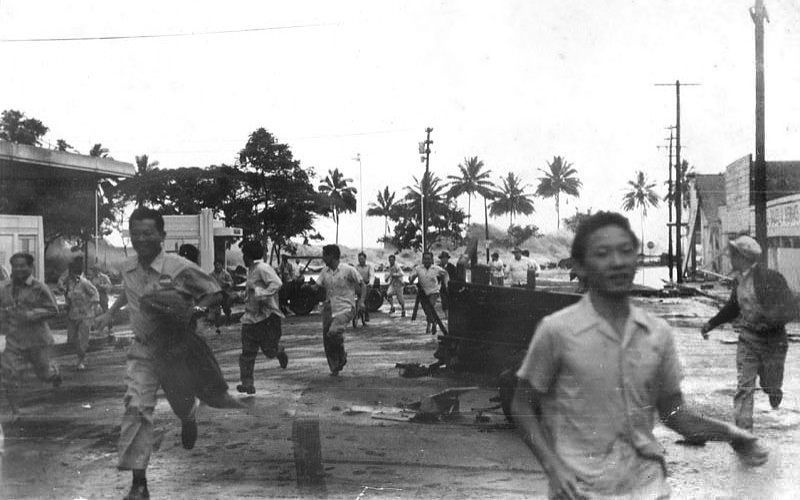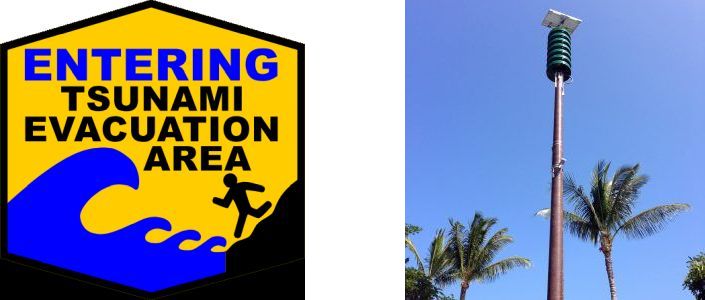
In Hilo, Hawaii there’s a palm tree in the city’s bayside park with metal rings on its trunk. Each ring is marked with a year and the height in feet. The highest one (arrow on my photo above) says “26 feet, 1946.” It memorializes a tsunami that spawned the Pacific Tsunami Warning System.
Tsunamis, sometimes called tidal waves, are seismic sea waves caused by earthquakes, underwater landslides or explosions. They happen when the ocean is abruptly displaced, as shown in this tsunami animation.
In the wee hours of 1 April 1946 a massive underwater earthquake struck offshore in the Aleutians near Unimak Island, Alaska. It was so massive that it created a 114-foot wave that swept away Unimak’s new lighthouse. The rest of it raced across the Pacific Ocean at 500 miles per hour and hit Hilo five hours later around 7am.
Hilo had no idea the tsunami was coming. Some people were mesmerized as the bay sucked loudly out to sea and exposed floundering fish. When the water returned in five surging waves, the highest was a 26 foot wall of water. Everyone ran away. 159 people died. The town was destroyed. (Note the wave in the background of this photo taken as the tsunami arrived in 1946.)

The palm tree was there when it happened. The 26-foot marker shows the debris line left by the 1946 tsunami plus three other large tsunamis that passed the tree: 15 feet in 1960, 12 feet in 1952 and 8 feet in 1957. This video from September 2018 explains the markers (starting at the 1:19 timemark with the narrator’s face).
The following video shows After and Before photos taken in 2010 and taken at the moment the tsunami hit the trees.
Ultimately, the disaster had a positive outcome. By 1949 the U.S. had installed a warning system, now called the Pacific Tsunami Warning Center, to detect earthquakes and warn of potential tsunamis. Throughout Hawaii you’ll see signs and sirens to tell you where to evacuate and when to leave.

It was a terrifying 26-foot wall of water but it led to a safer future.
(photo credits: palm tree by Kate St. John, 1946 photo from Wikimedia Commons, videos by Aaron and by the Center for the Study of Active Volcanoes, Warning sign and siren from Hawaii Emergency Management)